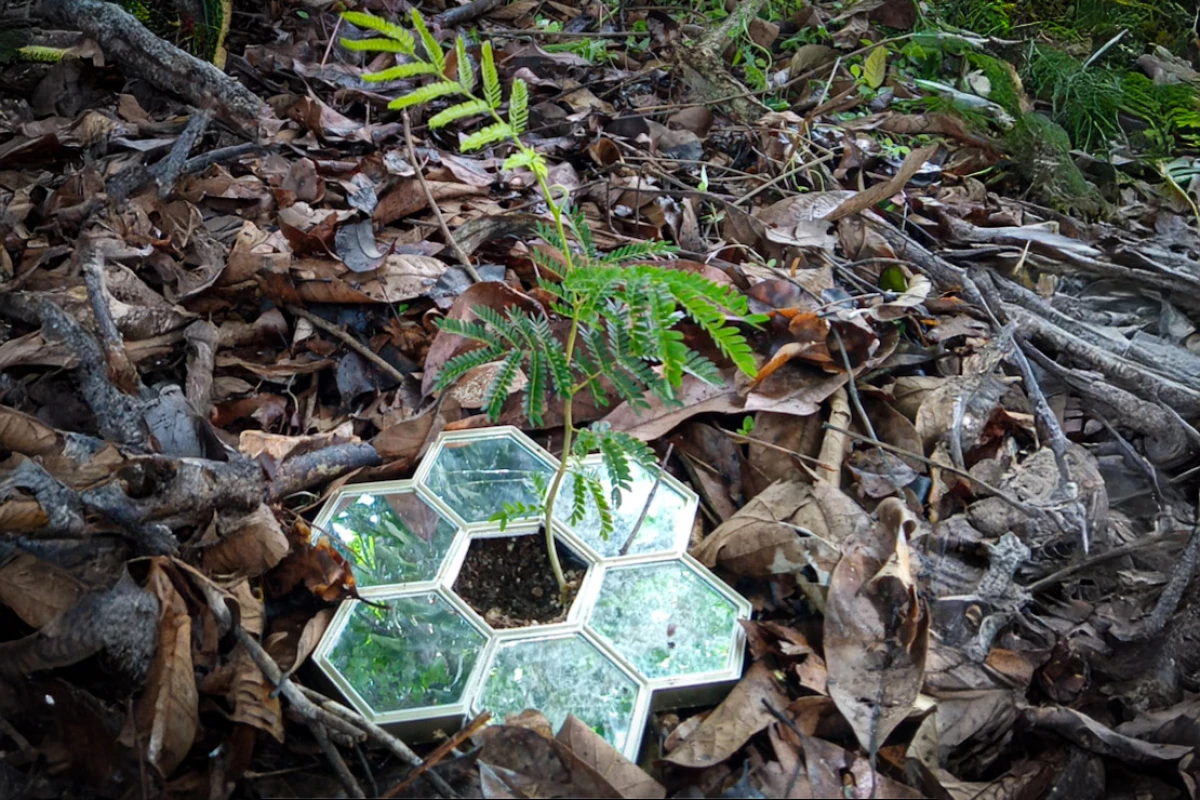Many indoor plant enthusiasts already know that mirrors can be used to direct more sunlight onto plants that need it. Scientists have now developed a method of applying that same principle to endangered tree seedlings that are struggling to grow in shady forests.
Serianthes nelsonii is a large tree found only on the Pacific islands of Guam and Rota. It's one of the world's rarest plants – there's only one mature tree left on Guam, while Rota is home to just 121 others.
The International Union for Conservation of Nature categorizes S. nelsonii as being "critically endangered" so needless to say, a number of efforts are underway to keep it from becoming extinct.
Unfortunately, even though hundreds of seedlings emerge from the shady forest floor beneath the Guam tree every year, most of them die within less than a month due to insufficient sunlight. Seedlings grown under artificial lighting in nurseries have fared better while still "in captivity," but haven't survived being transplanted into the forest.
What's really needed is a method of allowing the forest-grown seedlings to get more light. And no, installing artificial lighting in the forest isn't an option. Instead, Thomas Marler and colleagues at the University of Guam looked to mirrors.
The scientists were inspired by the plastic mulch which is commonly used in commercial agriculture operations.

Although the word "mulch" brings shredded material to mind for most of us, plastic mulch actually takes the form of plastic sheeting that is laid over the soil. The crop plants are able to grow through regularly spaced holes in the material, but the otherwise-intact plastic stops weeds from growing by keeping sunlight from reaching the soil (it also helps the soil retain moisture).
While plastic mulch is often black, some growers use brightly colored plastic that reflects sunlight up onto the plants, thus boosting their growth. Studies have even explored the use of highly reflective silver- or aluminum-foil mulch, but the material has proven to be too expensive for widespread use on large farm fields.
Cost isn't as much of a barrier, however, if you're just trying to grow a few hundred seedlings. With that fact in mind, Marler's team bypassed the foil mulch and went straight to actual mirrors. More specifically, the researchers utilized small mosaics consisting of a ring of hexagonal mirrors with an open space in the middle.
These mosaics were placed on the soil around Serianthes seedlings being grown in a cloth-shaded outdoor nursery in Guam, and on a shady forest floor in the Philippines. While the mirrors were left open to the sunlight on half of the plants, they were covered with sunlight-blocking leaf litter on the other half, to serve as a control.
It was ultimately found that in some cases, the unblocked mirrors reflected over 70% of the incoming sunlight up onto the plants. What's more, the mirror-boosted plants grew up to 175% taller than the controls, and had a 161% higher survival rate.
"The results indicate that using below-plant reflective surfaces could be easily adopted as an inexpensive component of managing out-planted stock produced in conservation nurseries and increasing the likelihood of improved in situ recruitment," the scientists state in a paper that was published in the journal Agronomy.
Source: University of Guam via EurekAlert





